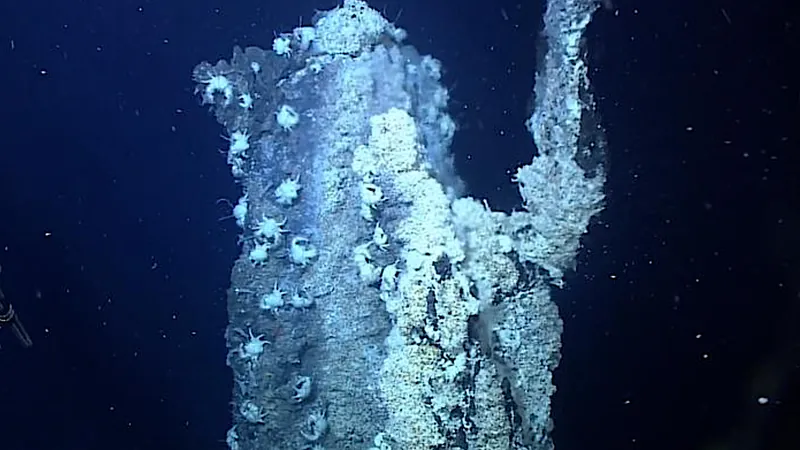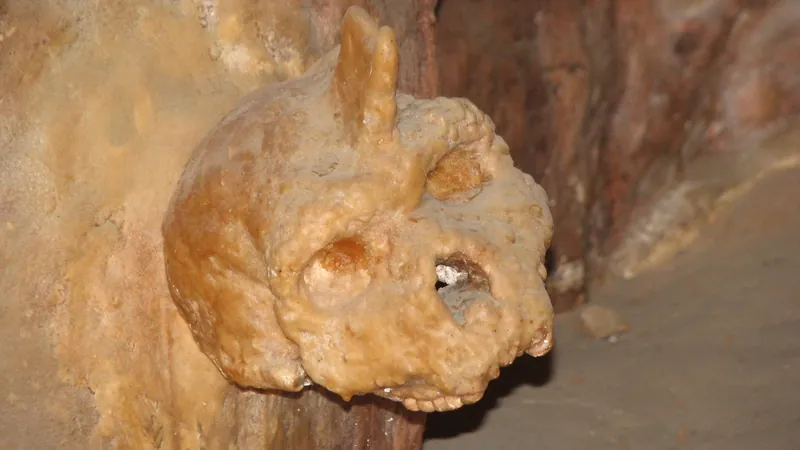
Deep Sea Marvel: How a Worm Turns Toxicity into Survival
2025-08-31
Author: Amelia
Meet the Incredible Paralvinella hessleri
Discover the astonishing deep-sea worm, Paralvinella hessleri, thriving amidst the perilous conditions of hydrothermal vents in the western Pacific! This unique creature has evolved a remarkable adaptation that allows it to survive in an environment saturated with toxic arsenic and sulfide.
A Toxic Environment Like No Other
High-pressure hydrothermal vents release scalding, mineral-rich water that can contain hazardous levels of arsenic and sulfide. P. hessleri, however, has found a clever way to avoid the dangers of this toxic brew by transforming harmful substances into a safer mineral.
The Secret Detoxification Strategy
In a groundbreaking study led by Chaolun Li from the Institute of Oceanology, CAS in China, researchers uncovered how this little worm accumulates arsenic in its cells, where it reacts with sulfide to form orpiment, a yellow mineral that is much less harmful. This astonishing detoxification mechanism allows P. hessleri to endure where most creatures would perish.
A Vibrant Appearance Amidst the Shadows
Images capture the striking appearance of P. hessleri, with its bright yellow hue standing out against the stark white biofilm and dark ocean floor. Dr. Hao Wang, a co-author of the study, recounted his awe when first observing these mesmerizing beings through a remote-operated vehicle. He expressed disbelief that life could flourish in such a hazardous habitat.
A Curious Connection to Art History
Interestingly, the same toxic golden mineral produced by the worm, orpiment, was once treasured by artists during the medieval and Renaissance periods. This fascinating intersection of biology and art history highlights the complexity and wonder of life in extreme environments.
Implications for Future Research
The team's discovery has significant implications for our understanding of marine life and how organisms navigate toxic elements in their surroundings. They hope this knowledge will inspire scientists to explore further the relationships between marine invertebrates and their environments.
Conclusion: Nature’s Ingenious Solutions
With its ability to 'fight poison with poison,' the Paralvinella hessleri not only challenges our perceptions of life in extreme conditions but also encourages us to rethink the resilience and adaptability of oceanic creatures. As we continue to uncover the secrets of the deep, who knows what other astonishing survival strategies await discovery?









 Brasil (PT)
Brasil (PT)
 Canada (EN)
Canada (EN)
 Chile (ES)
Chile (ES)
 Česko (CS)
Česko (CS)
 대한민국 (KO)
대한민국 (KO)
 España (ES)
España (ES)
 France (FR)
France (FR)
 Hong Kong (EN)
Hong Kong (EN)
 Italia (IT)
Italia (IT)
 日本 (JA)
日本 (JA)
 Magyarország (HU)
Magyarország (HU)
 Norge (NO)
Norge (NO)
 Polska (PL)
Polska (PL)
 Schweiz (DE)
Schweiz (DE)
 Singapore (EN)
Singapore (EN)
 Sverige (SV)
Sverige (SV)
 Suomi (FI)
Suomi (FI)
 Türkiye (TR)
Türkiye (TR)
 الإمارات العربية المتحدة (AR)
الإمارات العربية المتحدة (AR)